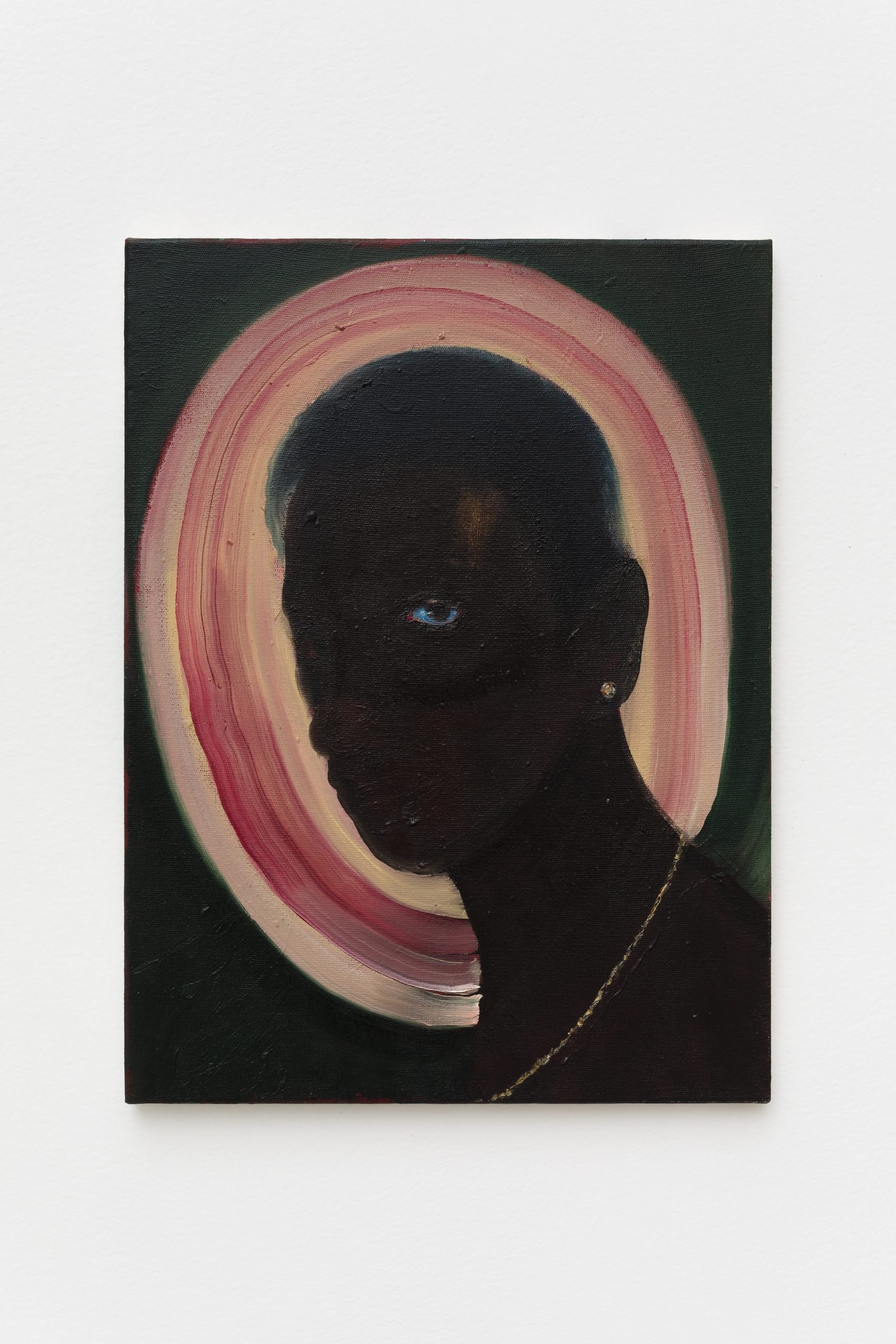
© » KADIST
Antonio Obá
Figura Noturna II by Antônio Obá depicts a dark figure, surrounded by a halo of light set against an even darker background. He has one eye open, which stares intensely at the viewer. The image relates to a theme recurrent in the artist’s practice: the figure lying awake at night.

© » KADIST
Antonio Vega Macotela
The mines at Potosí are both the site and subject of this work, also titled Potosí, by Antonio Vega Macotela. Historically, these mines bankrolled Spanish imperial coinage; the Spanish began excavating the site for silver in 1545 in what is now Bolivia. The mines themselves are situated at great altitude in the Andes, and are inhospitable to animal labor.

© » KADIST
Antonio Pichillá
Wind by Antonio Pichillá is a textile piece depicting the glyph that represents the element wind in the Mayan tradition. It is woven in the four colors of each of the cardinal points which, together, symbolize the entire universe. It is woven mostly with knots that the artist refers to as a “bond between two or more systems that also represents a closure […] the knot in the throat that submerges the voice.” This piece, like other works in Pichillá’s practice, is an attempt to reconcile the Maya Tz’utujil symbolic tradition with Western art historical categories and practices.

© » KADIST
Antonio Caro
Juego de Banderas (a play on words that loosely translates to both set of flags and game of flags) is a triptych of modified Colombian flags by Antonio Caro. Although the yellow, blue and red stripes on the first flag are faithful to the original, the second flag at the center has been modified to feature the word Colombia, emulating the typography and white-on-red design of the iconic Coca-Cola brand. Caro’s first version of this logo was a 1976 graphite drawing, and he has since produced several variations in different materials.

© » KADIST
Antonio Ole
Antonio Ole’s Rhythm of N’gola Rhythms (1978), is a film about the struggle for Angolan political independence. It looks at the role of popular culture and labor strikes through the 40s and 50s following the band Ngola Ritmos who embarked upon a consciousness-raising mission with their pro-independence political music. Through both their clandestine activities and their music, the band is credited with aiding political mobilization take off in Angola.
Antonio Vega Macotela
Antonio Vega Macotela’s multidisciplinary practice is centered around site-specificity, and often engages marginalized communities such as prison inmates, miners, Indigenous communities, and hackers...
Antonio Caro
- location: Bogotá, Colombia
- year born: 1950
- gender: male
- nationality: Colombian
Antonio Ole
António Ole is one of Angola’s most influential artists...
-
1970-1979
Antonio Ole
1978Antonio Ole’s Rhythm of N’gola Rhythms (1978), is a film about the struggle for Angolan political independence...
-
2010-2019
Antonio Caro
2016Juego de Banderas (a play on words that loosely translates to both set of flags and game of flags) is a triptych of modified Colombian flags by Antonio Caro...
Antonio Pichillá
2017Wind by Antonio Pichillá is a textile piece depicting the glyph that represents the element wind in the Mayan tradition...
-
2020-2029
Antonio Obá
2020Figura Noturna II by Antônio Obá depicts a dark figure, surrounded by a halo of light set against an even darker background...
Antonio Vega Macotela
2022The mines at Potosí are both the site and subject of this work, also titled Potosí, by Antonio Vega Macotela...